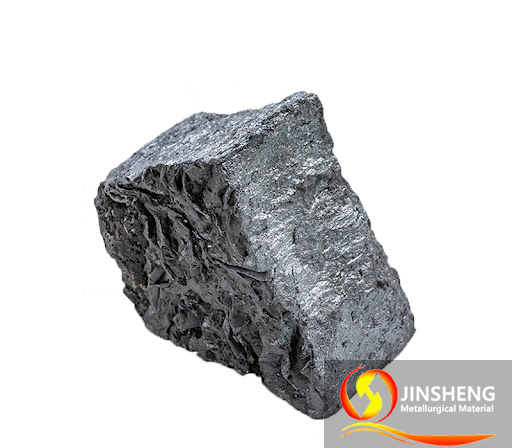What is the use of ferrosilicon alloy?
2025-07-11
Ferrosilicon alloy is an alloy that consists of iron and silicon as its main components, and contains small amounts of other elements (such as aluminum and calcium). It has a wide range of important applications in industrial production, and an understanding of its uses is essential for a deeper understanding of the industrial materials field.

Composition of Ferrosilicon
Main components and content range
Ferrosilicon consists mainly of iron and silicon, with small amounts of aluminum, calcium and other elements. Its silicon content fluctuates between 15% and 90%, depending on the specific application, with the higher the silicon content, the lower the melting point of the alloy. The higher the silicon content, the lower the melting point of the alloy. The iron content is in the range of 25% to 75%.
Effect of composition on properties
The composition of ferrosilicon directly affects its physical and chemical properties. Ferrosilicon is added to steel and cast iron alloys to improve their strength, hardness and corrosion resistance. In addition, ferrosilicon is used to produce silicon, which has important applications in the semiconductor industry.
Applications of Ferrosilicon
Iron and steel production
In the steelmaking industry, ferrosilicon acts as a deoxidizer and alloying agent. It helps to remove oxygen from the steel, thereby improving the quality and stability of the steel. By adjusting the silicon content, manufacturers can control the strength, ductility and corrosion resistance of steel. And, ferrosilicon enhances the magnetic properties of steel, which makes it valuable in electrical and transformer applications.
Ferrous Foundries
Foundries use ferrosilicon as a source of silicon for steel casting. It promotes the formation of graphite in cast iron, which affects its strength and thermal conductivity. The ability of this alloy to stabilize the molten metal and control its solidification process is critical to the production of precision and durable castings such as automotive parts, piping and mechanical components.
Applications in Ferroalloys
As a component of many ferrous alloys (e.g., ferromanganese, ferrochrome), ferrosilicon enhances the properties of these alloys, including hardness, corrosion resistance and heat resistance. These alloys have a wide range of applications in the aerospace, automotive and construction industries, which require strong and heat-resistant materials.
Types of Ferrosilicon
Ferrosilicon is usually categorized based on the content of various minor components, depending on the application requirements. The main categories are listed below:
Low carbon ferrosilicon and ultra-low carbon ferrosilicon
Used to avoid the reintroduction of carbon during the manufacture of stainless and electrical steels.
Low titanium (high purity) ferrosilicon
Used to avoid titanium nitride and titanium carbide inclusions in electrical and some specialty steels.
Low Aluminum Ferrosilicon
To avoid the formation of hard Al2O3 and Al2O3-CaO inclusions in many steel types.
Specialty Ferrosilicon
This is a generic term covering a range of customized products containing other alloying elements.
Ferrosilicon production process
Raw material
The main raw materials used in the production of ferrosilicon are iron ore, coke and quartz. Iron ore is used as a source of iron, coke as a reducing agent and quartz as a source of silicon.
Mixing
The raw materials are mixed in specific proportions and loaded into an electric arc furnace. The electric arc furnace is lined with refractory material to withstand the high temperatures.
Melting
Using electric arc technology, the mixture is heated to approximately 2000°C. The heat generated by the arc melts the raw materials, and a chemical reaction between the iron and silicon occurs to produce ferrosilicon.
Refining
The molten ferrosilicon is poured into ladles for refining to remove impurities such as sulfur, phosphorus and other non-metallic elements.
Cooling and Solidification
The refined ferrosilicon is poured into molds, cooled and solidified. The resulting ingots can be further processed to smaller sizes, depending on the application requirements.
Conclusion
Ferrosilicon alloys play an irreplaceable role in many fields such as steel production, casting and ferroalloys due to their unique composition and properties. Different types of ferrosilicon fulfill the needs of various specific applications and its production process ensures the quality of the product. It is of great significance in promoting the development of related industries.






